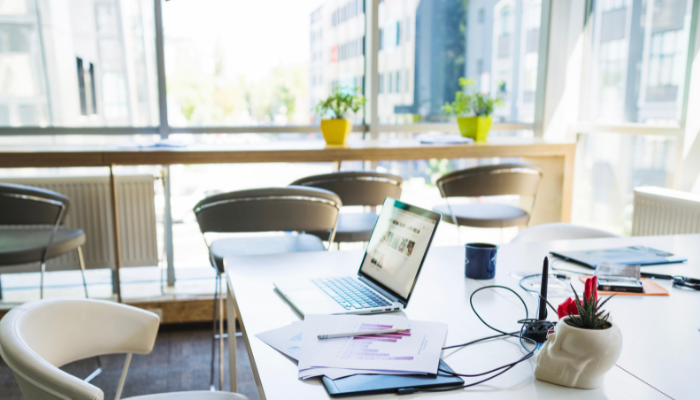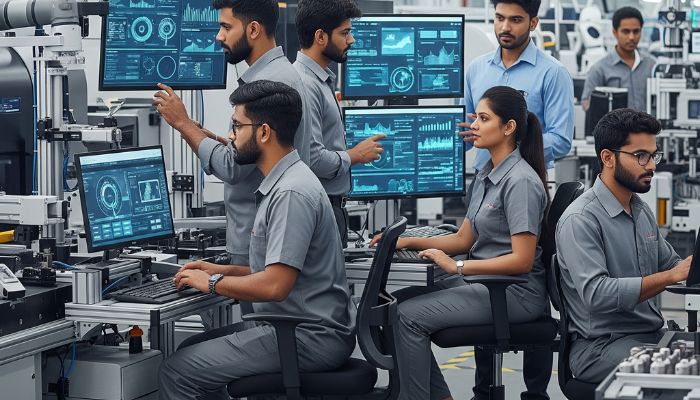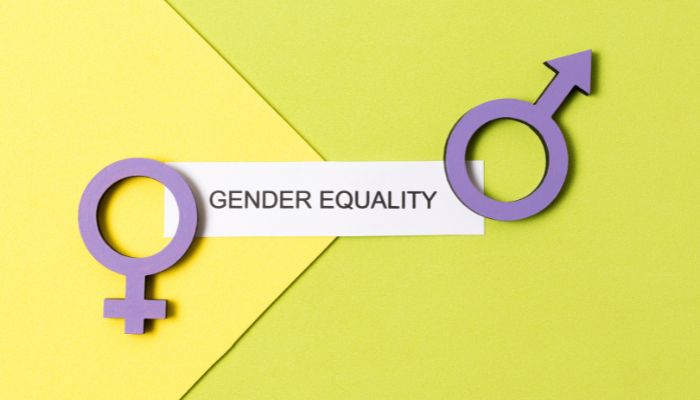Coming together to work gets more organized with workplace design. The concept of workplace design is to take the agenda of getting organizational goals realized from the abstract into the realm of a pragmatic blueprint and systematized execution. Its priorities are employee performance and safety, and maintenance of the organization’s financial health and competency throughout.
The global COVID-19 pandemic has proven to the world of work that the balance at the workplace can be upset by a litany of factors that planners tend to take for granted. Everything from insurance claim processing turn-around times to spacing between workstations had to be rethought. The pandemic was a singular phase shift for every single functional and administrative area of the organization; but therein lies the merit of workplace design – it is a way to get organized while keeping productivity and employee experience as the topmost priority. Workplace design is a nod to the adage ‘a place for everything, everything in its place’. This approach makes workplace design an endeavor that’s alive – new items keep coming in and shifting priorities and hanging items get addressed instead of being perpetually ignored until they spiral into pressing problems.
Workplace design goes beyond the mere grouping of tasks or envisioning spatial efficiency. It’s about listing and prioritizing the most relevant influences in the workplace and giving them their due importance on the road to execution. In an organization with departments designated for handling key objectives, it becomes organic to divide up this list of influences according to the nature of responsibility. The common goal for all departments in the context of workplace design is worker wellness.
You might also be interested to read: Workforce Planning – Post-COVID Recovery Depends On Normalizing The Agile Work Environment
Workplace design in its many forms is already recognized
Figureheads of authority in India according to the Indian constitution appear both on the center and state levels since ‘Labor’ is on the concurrent list. The powers of Legislation have addressed workplace design in their own way: The center has come up with the Occupational Safety, Health and Working Conditions Code, 2020. It ensures the tenets of worker health, a practical and safe work environment, as well as administrative support in the form of compulsory provision of appointment letters to them by their employers. Following through on these guidelines across various categories of workers and the nature of work is the responsibility of the corporates employing them. This is why the OSH code goes a step further to describe who can be covered under these broad terms ‘employer’, ‘employee’, ‘contractor, etc.
The Directive Principles in the Constitution of India come together with the international instruments and arbitrators such as the International Labor Organization to vest the Government of India, Ministry of Labor & Employment, with the authority to declare the National Policy on Safety, Health and Environment at Workplace (NPSHEW) on 20th February 2009 as the legislator and custodian of worker safety, welfare, and benefits administration. The enforcement of these matters is done by the Directorate General of Factory Advice Service & Labor Institutes (DGFASLI) under the Ministry of Labor & Employment, Government of India, through a policy document.
It was a timely build-up towards essential workplace design
These developments could not have happened at a better time. Come 2020, with a worldwide pandemic seizing every worker’s immediate sense of well-being, workplace design came to the rescue of any business that wanted to retain its sustenance by showing concern for its employees. Interestingly, it also ensured the sustainability of businesses in a tumultuous time by humanizing businesses as entities that faced the same struggles as the people who served them.
Workplace design listed out priorities that hold significance to all regardless of organization size, hierarchical stature, or personal goals and abilities. Here are the two main considerations of workplace design covers:
Health: Employee health today concerns itself in equal parts with mental and physical health. Employees need to have physical conditions that are conducive to working comfortably. They also need to “feel” safe. Hostile environments or anxiety are widely unacceptable now and managers today are more aware than before about the boundaries that need to be respected between work and personal time. DGFASLI focuses on psycho-social and ergonomic factors of worker health because they have a direct bearing on workplace productivity. Telehealth programs and remote consultations from doctors in many disciplines now make contact-less treatments and intervention possible.
Financial aspects: In addition to direct financial being made available in the form of covid-related personal loans, vaccination reimbursement, and grants, corporates in India now offer financial planning assistance unrelated to the pandemic too. Some of this help also includes paid leave for families coping with health emergencies and the fallouts of long-term treatment.
Where the impact of workplace design is likely to show
Given that 40% of employees in India are stressed about their finances and another 21.5% are concerned about their jobs, the financial wellness survey of Indian employees in 2021 as featured on koppr.in declares that significant improvements in financial freedom and the removal of worry over unexpected expenses are the main aims of India’s working population. The section of working professionals for whom this matters currently stands at 39.5% and 25.8% respectively. Workplace design works towards making these ambitions a reality for the Indian workforce. Not insignificantly, the Great Indian Urban Middle Class also thrives on the hope of being debt-free, another aspect that workplace design seeks to assist with by offering financial planning.
CRISIL India and General Electric in India are some of the top-of-mind examples of employers in India who tweaked their employee health policies and financial assistance patterns. They break away from the usual medical insurance offered by nearly all employers to offer interest-free loans or benefits for covid-related treatment expenses. CRISIL gave 50% of the annual bonus in advance to its employees in May 2021. Almost all companies including software giants like Dell India, automobile household name Maruti Suzuki, and banking mainstay Standard Chartered are a few examples among a slew of companies that have conducted on-site vaccination camps to help employees and their families cope with the second round of COVID-19 infections. All these measures are possible due to the foresight that workplace design makes possible.
Workplace design may not be the last word in making workplaces data-led and humane in a shifting plane of priorities and unprecedented changes. But it is the safest bet for promoting greater employee engagement. It lays out the wherewithal and influences that bring out the best for employees in their present. And it brings within reach a future that stays conducive to their work lives.
References:
- Why Companies Focusing on Workplace Design Thrive|Talent Culture – Employee Experience|Sara Jensen|July 13, 2021
- Companies flaunt health plans to attract, retain talent|Times of India|Namrata Singh|May 24, 2021
- Exploring the future of workplace design in India|MMOSER Associates|Ricardo Chacon|Sept 2019
- India’s Occupational Safety, Health and Working Conditions Code, 2020: What is it and How Should Companies Prepare?|India-briefing.com|Melissa Cyrill| January 22, 2021
- India Financial Wellness Survey 2021|Koppr.in
- Indian companies will have to reimagine offices for the hybrid workplace era|QZ.com| Niharika Sharma|June 22, 2021
- National Occupational Safety and Health (OSH) Profile| Directorate General Factory Advice Service and Labour Institutes in collaboration with International Labour Organization (ILO)|DGFASLI-ILO
- What Does Workplace Design Mean?|Safeopedia|May 5, 2019
You might also be interested to read:






